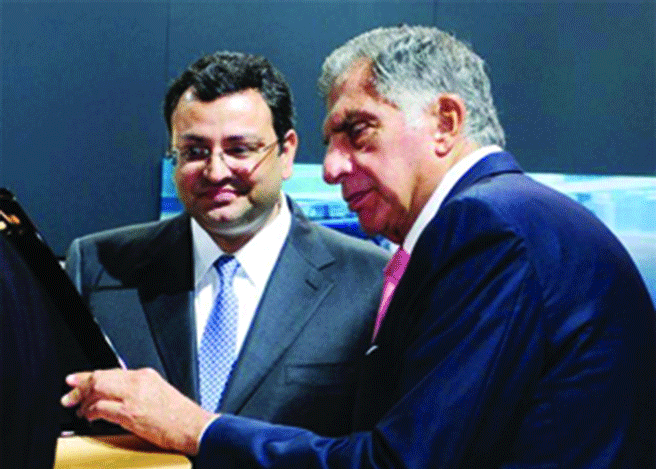In the Tata vs Mistry case, the SC missed a golden opportunity to lay down legal principles that corporate India can be guided by
Many a time, delivery of justice in high profile corporate cases is curious and subject of debate. The interplay of jurisprudence, facts, merits and delivery of justice in such cases is always debated. In the past few years, one such high profile commercial dispute is Ratan Tata Vs Cyrus Mistry.
Many opine that the apex court’s decision was not well-founded for a variety of reasons. Not in the least because it casts aside the well settled law that directors owe fiduciary duties to the company and not to the shareholders nominating them. The main argument is Supreme Court has entered into the domain of fact-finding of National Company Law Appellate Tribunal (NCLAT) instead of limiting to the question of law.
The Supreme Court is foremost a court of law. Its jurisdiction under Section 423 of the Companies Act, 2013 is to decide “questions of law” emanating from the orders of the NCLAT. Identical provisions are found in many statutes and serve an important objective of shutting out appeals that do not involve questions of law from engaging the Supreme Court’s precious judicial time.
The Supreme Court is not expected to, and indeed should not, get embroiled in the facts of a particular case or re-appreciate the evidence afresh. But that is exactly what the apex court has done here and without any sound legal basis.The result is that a golden opportunity to lay down legal principles that corporate India can be guided by, has been missed.
While it may be argued that questions of fact and questions of law are sometimes mingled, it is wrong to say there is no distinction between the two. A simple example, in the context of this case, will make the distinction clear. Whether Cyrus Mistry was removed because of his lack of performance (as the Tatas claimed) or because he resisted interference by a super board (as the SP Group claimed) is a question of fact as indeed is the question whether the manner of his removal and the methods employed for this purpose lacked probity. The NCLAT answered both questions in the SP Group’s favour.
The Supreme Court was required to evaluate what was the legal effect of the NCLAT findings. Did they make out a case of oppression in law and, if they did, whether the reliefs granted by the NCLAT were justified, as a matter of law? A court of law can interfere with the findings of fact only if the findings were either based on no evidence or were perverse, i.e., the finding was so shocking that no reasonable fact could have been arrived at on the basis of evidence before it. Ironically, the Court acknowledged this to be the correct test but abandoned the principle altogether.
Supreme Court’s decision is replete with findings/ comments on the list between the parties. Each of these findings/comments fall within the domain of pure questions of fact that are not matters the Court ought to have waded into. The Court has re-appreciated the evidence de-novo and, in the process, disturbed the findings of fact of the NCLAT without even explaining why the findings of fact of the NCLAT called for interference.
Tribunals like the NCLAT exercise the jurisdiction that High Courts formerly did. Challenge to the constitutional validity of provisions that make NCLAT the final fact-finding body was repelled bya Constitution Bench of five judges of the Supreme Court in a landmark case of Madras Bar Association v Union of India. In this case, the apex court found it perfectly reasonable that the NCLAT (comprising judicial members on par with the judge of High Court) was empowered to decide all questions of fact and law whereas an appeal against its orders to the Supreme Court would lie only on questions of law.
But the judgment has overlooked this well-settled practice. What could explain this deviation from established principle of judicial reticence of a court of law to the trier of fact (fact finding by jury or judge by evidences)? Part of the problem lies in the Court perhaps viewing this high-profile corporate case more as a battle between two personalities — a patriarch and his anointed successor — rather than an issue involving the rights and duties of a majority and minority shareholders of India’s biggest corporate house. Simply the apex court considered emotional issues rather than looking into the facts found by the appellate tribunal, which is not a good symptom for corporate governance in professional ways.
(The writer is a Special Correspondent of The Pioneer. The views expressed are personal.)


























